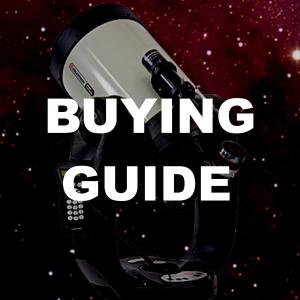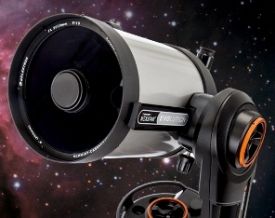
Why buy from a Telescope Specialist
Please use Email to contact us where possible - Delivery is £5.95 - we only use reputable carriers.
See our Customer Reviews Page
Buying from an Astronomy specialist supplier with years of experience allows you to be confident that we stock only high quality equipment that will provide years of use. We stock all the leading brands, all with a full manufacturers warranty. We are happy to offer free lifetime technical support for as long as you own the product.
Talk to us
Astronomy is a complex subject and hobby, the equipment is often very technical and compatability between products and brands can be daunting. We are happy to guide customers to the right products. Our phones are often busy so please Email with any questions. as we will do our best to respond fast - we often reply to emails out of hours to. We are customers to so we aim to respond to enquiries as promptly as possible.

How to choose an Astronomical Telescope
Choosing a Telescope can be daunting with so many types and features available, we stock only reputable brands offering the very best choice available. Please take the time to read this page if you are unsure what type of instrument best suits your requirements and of course budget, an important consideration is the size and weight of the Telescope. It is far better to choose a model that is easy to setup and use than one best suited to an observatory. Please remember you are welcome to Email for a fast response to any questions. If your thinking of buying your first telescope see our Telescope Buying Guide section for our guide to starting out in astronomy and stargazing.
Buy with confidence, we are proud to be authorised UK dealers for Celestron, SkyWatcher, Meade, Baader, Bresser, Explore Scientific and Starlight Instruments. This wide choice of leading brands allows us to provide you with the right goods sold without bias.

Telescopes - which types are there?
There are essentially three types of Telescope optics available, all of which have superb performance with modern glass types and coatings.
Telescopes are often described with two important numbers, aperture (the lens or mirror diameter) and focal length (the distance from the lens or mirror to the eyepiece). This then gives us the focal ratio which is simply how many times the diameter the focal length is. Telescopes with fast focal ratios such as F5 are great for low power wide field work and are well suited to imaging. Telescopes with longer focal ratios such as F9 are great for higher power viewing and planetary imaging where greater magnifications are needed. There is a simple calculation to determine magnification: Divide the focal length of the eyepiece in mm to the focal length of the Telescope in mm. The aperture is the most important feature as the larger this is the more light your Telescope gathers therefore revealing fainter objects to your eye.
Please note these are not hard and fast rules on the design of choice as most modern Telescopes can be used for low and high power as well as imaging. Please browse our Telescopes section to see the complete range.
Smart All In One Telescopes
Smart telescopes are easy to use with a built in goto and tracking system along with a sensitive sensor can be the all in one solution to taking great images. These incredible instruments work from your smartphone or tablet and will show, save and share your images.
Smart Telescopes

Refractor Telescopes
The refracting Telescope uses lenses to gather the light and offers low maintenance and a robust design. Refractors boast good contrast and are versatile instruments that are available in many types and focal lengths.The simplest design is the achromat which use a doublet lens and are seen in apertures usually ranging from 50mm to 150mm, although excellent this design does exhibit a small amount of false colour on very bright objects. There are now many specialist refractors utilising special dispersion or ED glass and sometimes a triplet design to achieve finer corrections even at very short focal lengths, read about ED Doublet refractors.
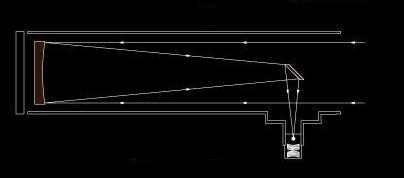
Reflector Telescopes
The reflector Telescope uses a mirror to collect light, this is a very simple design that generally offers more aperture for your money and larger sizes are quite manageable compared to the refractor. The reflector does not suffer any false colour as it is not refracting light but do require more care and maintenance that the refractor. The mirrors are adjustable and need to be aligned to eachother to provide the best results. Mirrors are also difficult to clean and can require recoating after several years, this is relatively inexpensive. Reflectors are very popular in sizes from 114mm to over 400mm apertures.

Catadioptric Telescopes
The catadioptric Telescope is generally a hybrid using mirrors and lenses often resulting in compact designs with superb optical performance. Examples of this design are Schmidt Cassegrains, Maksutov Cassegrains and the Meade ACF or advanced coma free Telescope. All of these are robust, compact and extremely versatile for both visual and imaging purposes and are available from 90mm to over 400mm apertures. Because of the size advantage of this optical design most major manufacturers have incorporated this design with goto or computerised mounts.
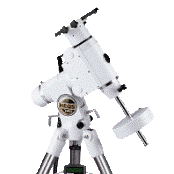
Telescope Mounts
The Telescope mount is as important as the optics themselves as stabilty is essential for any Telescope. There are two types of mount, the Alt Az or altazimuth which is a simple desgn that allows vertical and horzontal movements. Some modern Alt Az mounts are motorised and computerised offering a lightweight easy to use system.
The German Equatorial mount is a desgn that requires careful alignment but results in accurate tracking and is ideal for imaging the night sky with. Again there are versions of this mounting type that are motorised and computerised for easy object location and tracking. Please see our Telescope Mounts section to view all the options available.

Eyepieces
The eyepiece is the optic that allows you to see the focussed image provided by the Telescope and dictates the magnification. Eyepieces are available in two formats: 1.25" and 2", the smaller 1.25" eyepieces are the standard and are available in many focal lengths and designs. The larger 2" eyepieces are ideal for low power wide field work but can only be used with Telescopes that accept this size. Standard eyepieces such as the popular Plossl offer 50 degree apparent fields where Super Wides give 68 degree fields, Ultra Wide Angles give over 80 degree fields for stunning views. Please see our Eyepieces section to view the full range from all the leading manufacturers.
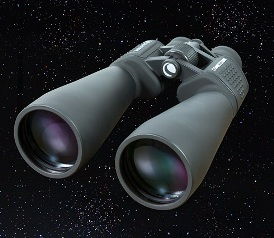
Choosing Binoculars
Binoculars are often not thought of as a tool for astronomy but can be a fine introduction to the night sky and larger models can often show objects that are too large to fit in a telescopic field. Binoculars like Telescopes have two important features, aperture which is the diameter of the main lenses, larger aperture results in brighter images. Secondly magnification dictates how large an object will appear. Our entire range of Binoculars have been carefully selected to be suitable for both astronomical stargazing and terrestrial use.
An important consideration with Binoculars is exit pupil. This is calculated by dividing the magnification in to the aperture (in mm), an example is a 10x50 which provides a 5mm exit pupil. Why is the exit pupil important? The pupils in our eyes when young can be up to 7mm in diameter making use of a full 7mm light cone, when we reach adulthood it generally ends up at around 5mm, so a 10x50 with it's 5mm exit pupil is a perfect match for our adult eyesight making use of all the available light. We recommend 50mm Binoculars as the maximum size for handheld use as larger models will be too heavy for extended use.
Giant Binoculars are not only superb for long distance terrestrial observation of shipping or wildlife but also make excellent instruments for deep sky visual observers. Many of these giant Binoculars have 80mm or even 100mm lenses which will reveal extremely faint objects such as galaxies and nebulae. Mounted on a photographic tripod these large Binoculars make fine astronomical instruments and remain extremely portable. With fields of view often more than three degrees giant Binoculars will have the light grasp of medium sized Telescopes but showing far more of the night sky. You can see our full range of handheld and giant Binoculars by visiting our Binoculars section..
Remember we are here to help, please Email us if you have any questions, we reply to emails fast and often outside office hours.
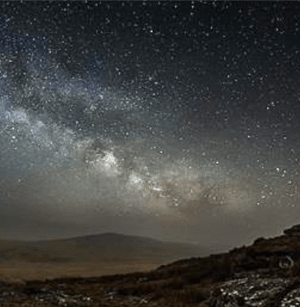
Where to use a telescope
A telescope can be used anywhere, for the very best views of course a location that is darker and as far from street lighting as possible is best. Even the average suburban back garden can provide great views of solar system objects but also many deep sky targets.
We have enjoyed great views of Saturn, Jupiter, Mars and of course the Moon fron central London! So dont be put off if you do not have access to pristine skies, there is always something to see and enjoy in the night sky.
Vist the Go Stargazing website where you will find all the best dark sky locations in the UK as well as listing of stargazing events throughout the UK.


